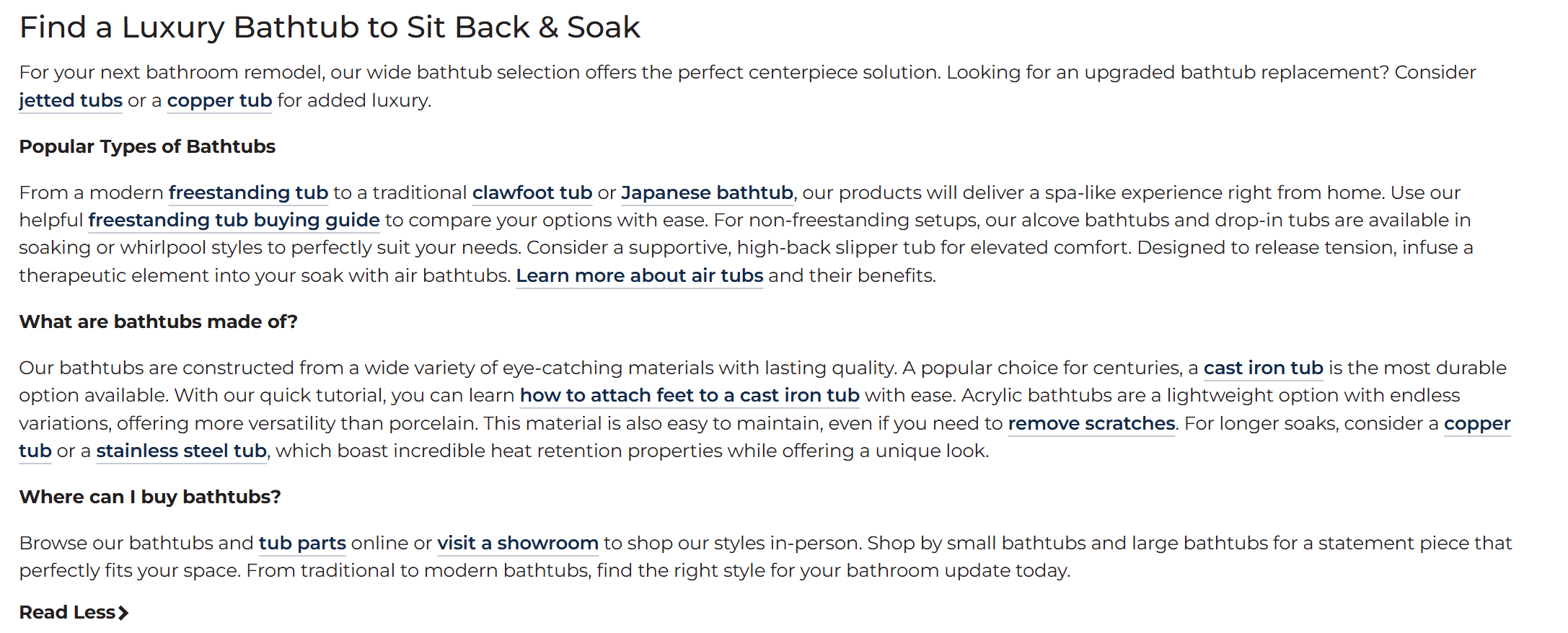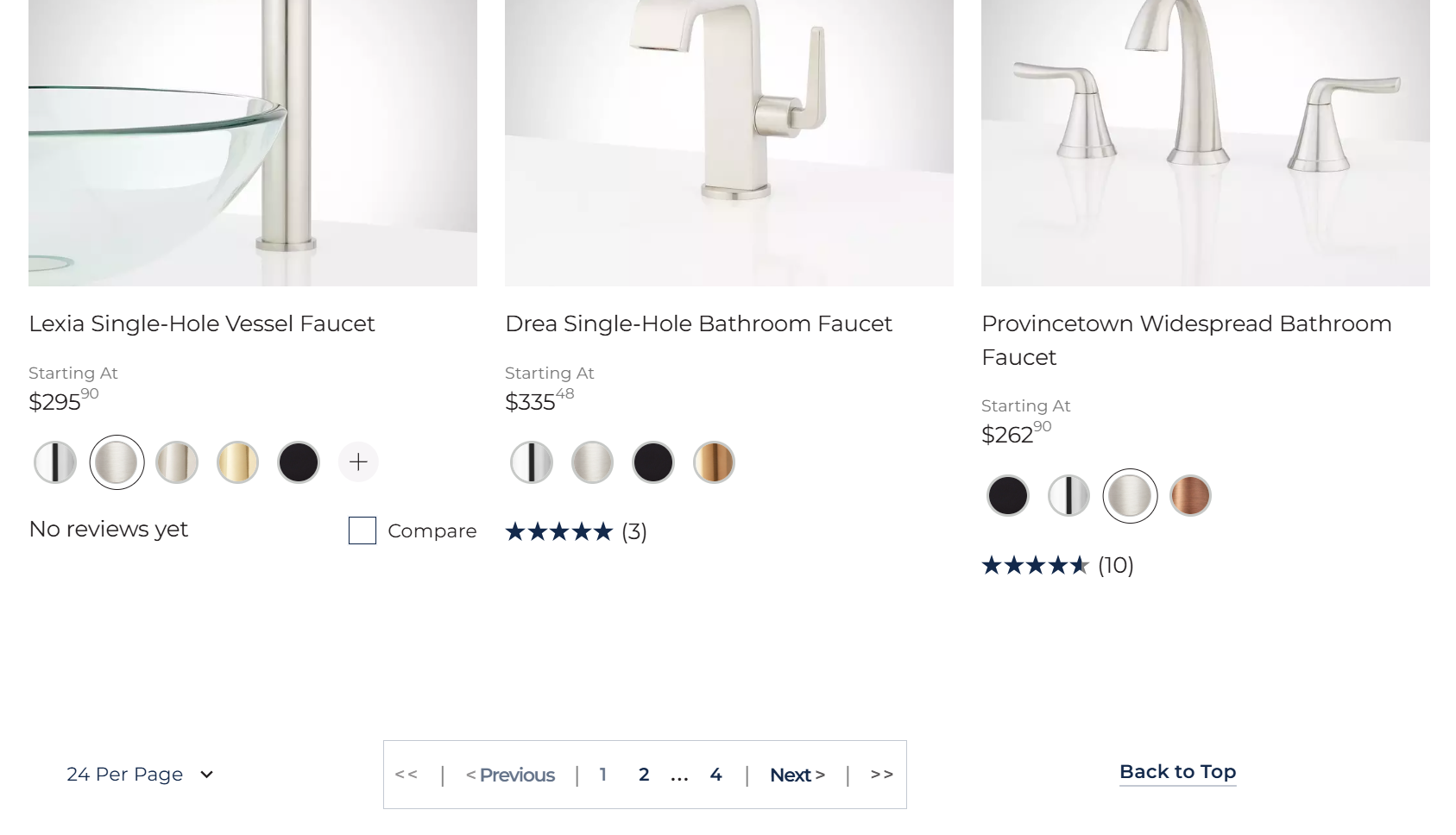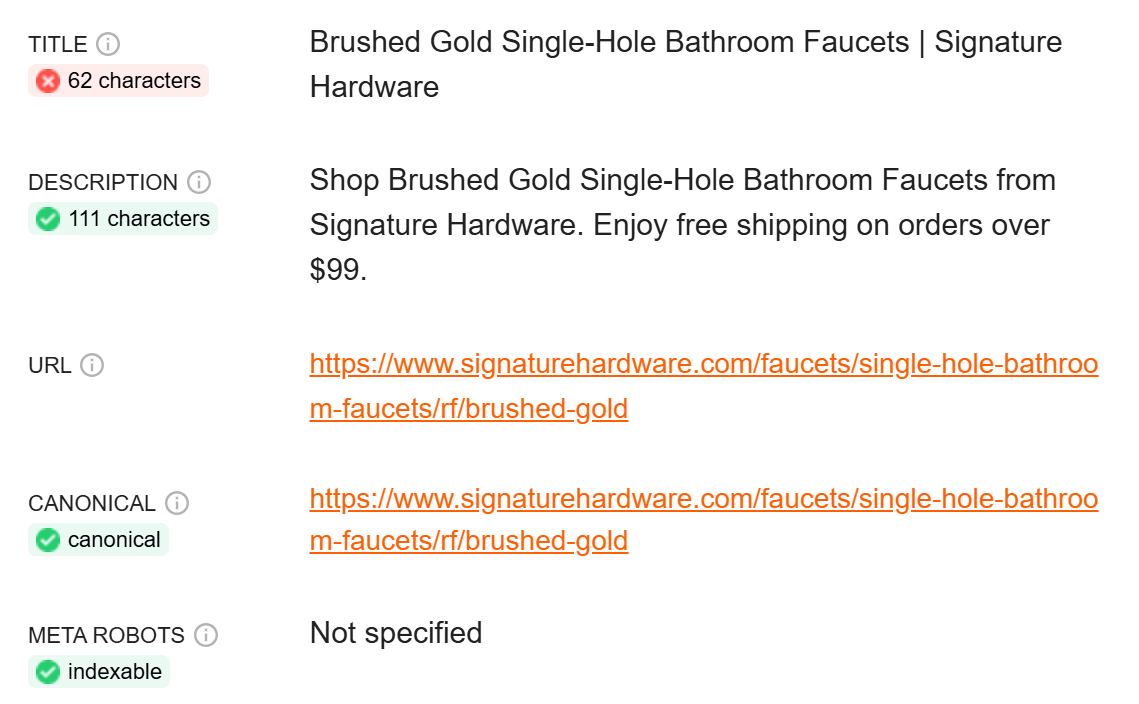Categories
Signature Hardware focused on 9 core categories, plus collections. My responsibilities included recommending new categories, consolidating duplicate content, merging or removing irrelevant categories, and optimizing pages with relevant keywords. I also provided recommendations for navigation updates based on category trends and keyword research. These responsibilities spanned across the main category pages, as well as L2 and L3 pages.
Category Landing Pages (CLPs)
My focus with categories was to ensure that our category pages were visible and fully optimized for their focus keywords, and that deeper category pages had the proper visibility for users.
CONTENT BLOCKS
There was an opportunity to add content to our category pages and bolster context, internal links, and keyword rankings. After planning and presenting the strategy, I worked with our developers, design, and copy teams to add content to all of our main category landing pages. The result was more opportunities for internal link placements, an increase in keywords, and a range of session increases of up to 122%.
INTERNAL LINKS
Each CLP has a section with “pills” that were used to link to deeper category pages. Heat maps showed high engagement with these sections. I used this area to give new and popular category pages a boost with crawling, indexing, and page views.
With a site this size and the way product types were built, there was a risk of using the non-canonical version of a URL. Because of this, I worked to keep proper internal links on these pages to preserve link equity and stable rankings.
Product Listing Pages (PLPs)
PAGINATION
Before pagination was implemented, the experience on PLPs was a Load More button that relied on JavaScript. This prevented products that did not load on the first page from being crawled. This project included mock-ups from the creative team and execution from the development team with requirements I provided to ensure proper canonical tagging and links with href attributes from the pagination navigation.
TITLE UPDATES
Regular tests were deployed to increase CTR from search results. I tested keyword variables, messaging pillars, and category attributes.
NEW AND UPDATED CATEGORIES
Over the years, there have been a few categories that became redundant or obsolete. Whether it was changing natural wood vanities to solid wood vanities; merging coat hooks, coat racks, and coat hook and racks under one main category called wall hooks; or deleting ada compliment grab bars because the content was the same as grab bars — the changes that were made to category pages were always data-driven and focused on presenting products accurately. I would also find new opportunities for categories and take the recommendations to our merchandising team who would work with the product team to evaluate the potential longevity of the recommended category.
Indexable Refinement Pages
Playing off existing PLPs, I worked with developers to create a dynamic solution using Salesforce to create new category pages based on select refinements (aka facets or filters) and available inventory. In practice, when an active indexable refinement was chosen, it would update the URL. In the case of the example below, the URL for Single-Hole Bathroom Faucets (https://www.signaturehardware.com/faucets/single-hole-bathroom-faucets) would update to the URL for Brushed Gold Single-Hole Bathroom Faucets (https://www.signaturehardware.com/faucets/single-hole-bathroom-faucets/rf/brushed-gold)
Refreshing the page would update the H1, meta description, and title, then remove the noidex tag. This allowed the new dynamic page to be indexable and visible to searchers.
We launched test pages in early 2023 and expanded to more pages in August. The categories and refinements were selected based on search volume, and the new pages unlocked hundreds of new pages with high purchase intent, such as brushed gold bathroom faucets, polished nickel shower arms, brass wall hooks, and white acrylic tubs.
I managed these dynamic pages with a custom sitemap using Screaming Frog to ensure the correct pages were available to crawl. As more pages were added to our site, I created a system that allowed me to quickly identify available pages and pages that were no longer indexable due to inventory changes.
As a result, we moved to page one on hundreds of keywords with varying levels of search volume, driving 4,280 sessions, 0.51% CVR, $513.84 AOV, and $11,305.93 revenue as of January 2025.
Collections
Collections gave shoppers an easy approach to cohesive styles. Before launch, I created the URL structure and wrote page titles and meta descriptions for each collection. To develop the copy I used keyword research to understand the best information to include, whether it was the product materials, finish, or other attribute that defined the collection.
We started with bathroom collections, including faucets and bath accessories, and expanded to vanities and tubs. Once they launched, I QA’d internal links and on-page elements.






